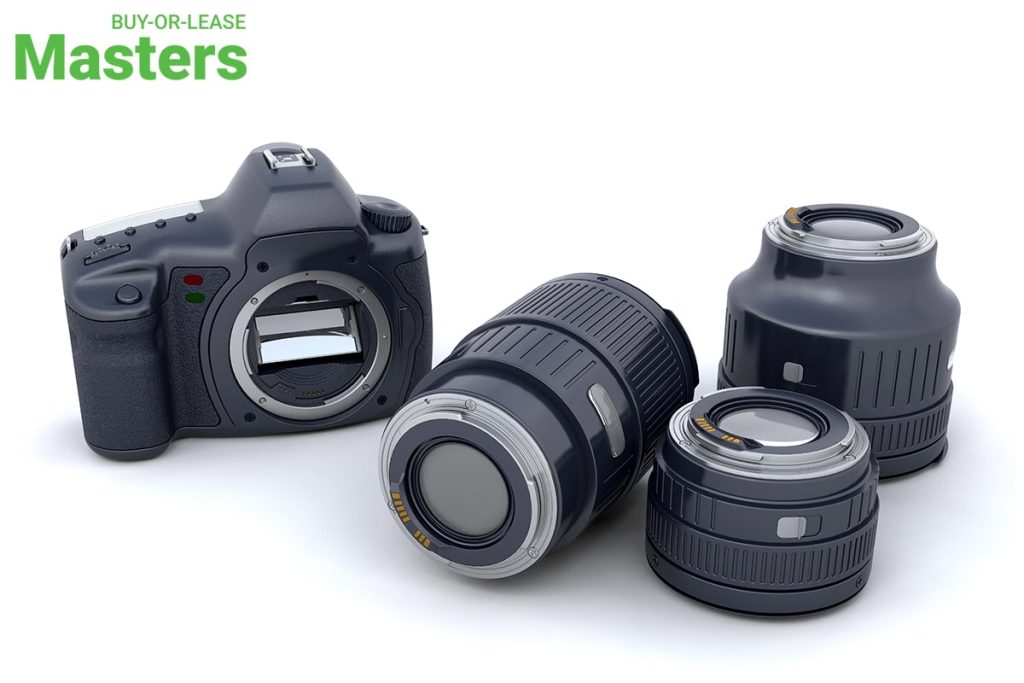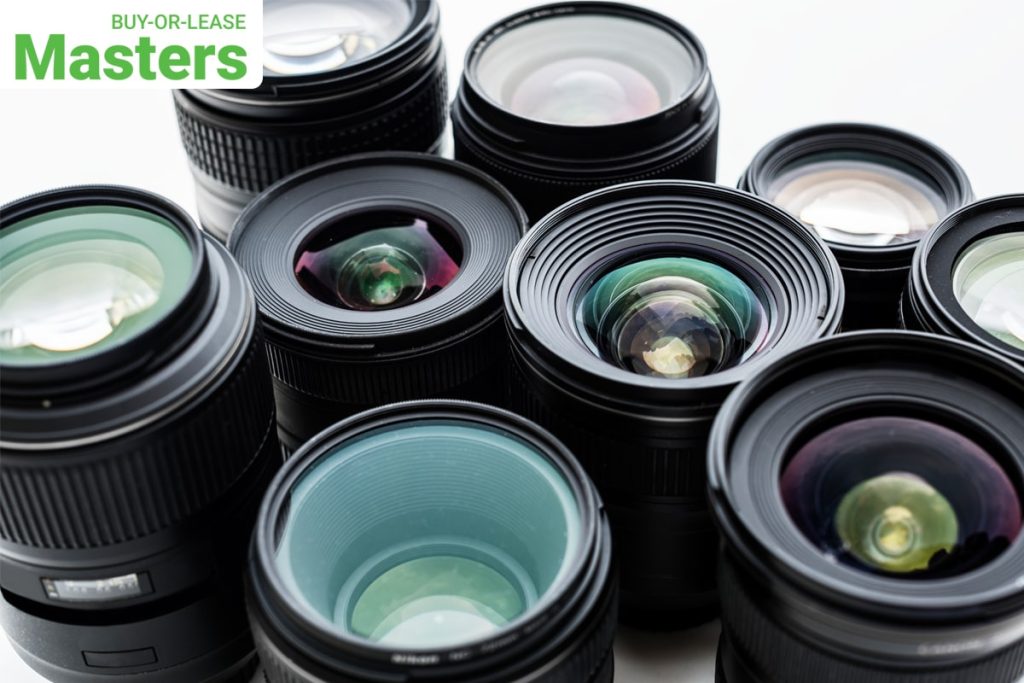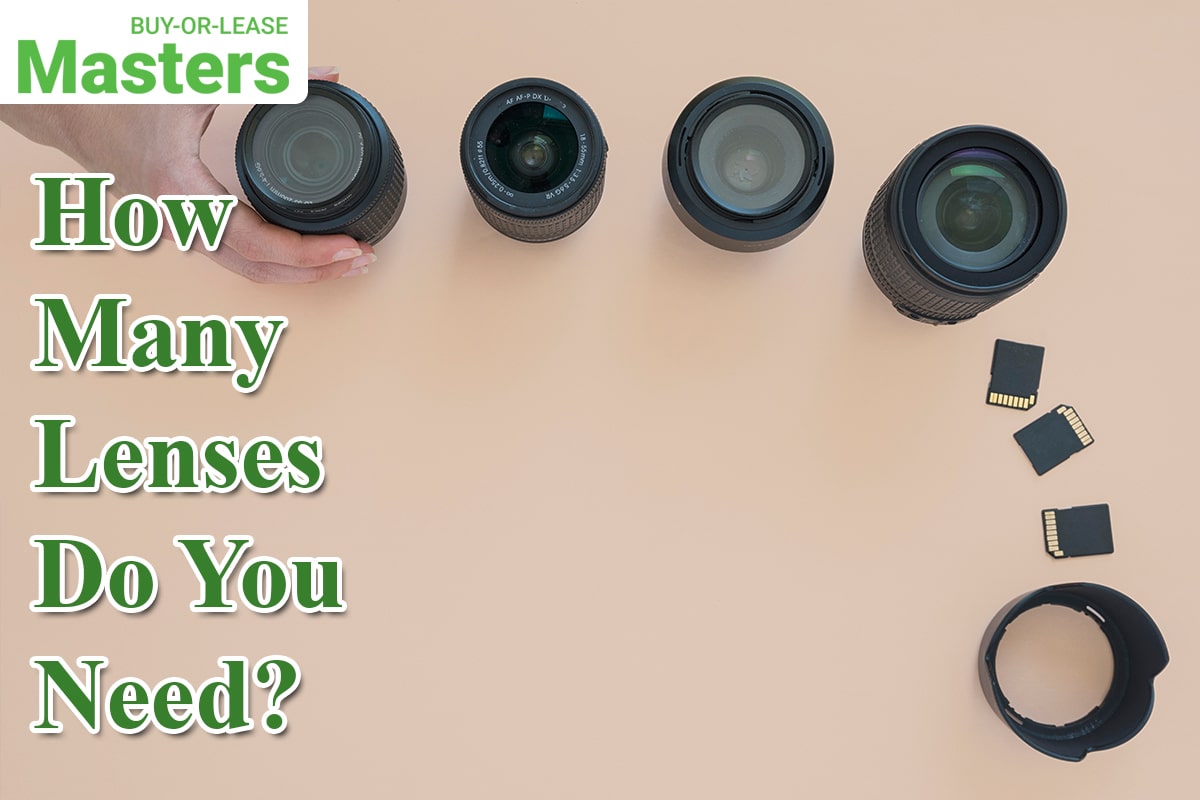If you’re a serious photographer, at some point in time you likely have asked yourself this question: How many lenses do you need? It’s a tough question and there is no one-size-fits-all answer since everyone has different photography needs. In this blog, Mastersbuyorlease will explore the various types of lenses available to photographers and provide guidance on how many each person should realistically aim to collect for their camera setup. With any luck, after reading through this blog, you’ll be able to make an informed decision that will help maximize your ability to capture whatever images you desire with maximum quality.
How Many Lenses do Beginner Photographer need?

If you’re not solely relying on a kit lens for your photography, consider having a collection of five or six lenses that cater to different focal lengths and shooting scenarios. This will provide you with more versatility and creative possibilities, allowing you to capture a wider range of subjects with precision and style.
- For a versatile mid-range zoom, it is recommended to have a minimum 24-70mm equivalent lens, which is often available as a kit lens option. However, enthusiasts might prefer a lens with larger apertures than the standard kit lens in this focal length range, allowing for more creative control over depth of field and low-light performance.
- A telephoto zoom lens (minimum 70-200mm equivalent) is typically the partner lens for kit-lens users, providing the desired zoom range. However, photography enthusiasts may prefer a lens that offers a faster aperture than f/5.6 at the long end, allowing for better low-light performance and more creative depth of field effects.
- For optimal photography, consider using a wide, fast prime lens with a focal length of 24mm or wider. This will allow you to capture a broader field of view, making it ideal for landscape, architectural, and street photography. Look for a lens with an aperture of f/2.8 or faster, which will enable you to achieve shallow depth of field and shoot in low-light conditions with ease.
- For optimal results, a normal, fast prime lens is recommended. This type of lens typically has an equivalent focal length of around 50mm or wider, and a wide aperture of f/2 or faster. With these specifications, you can capture stunning images with excellent low-light performance and beautiful background blur.
- A moderate telephoto lens, typically ranging from 70-90mm (equivalent), with a wide aperture of f/2 or faster. This type of lens is ideal for capturing subjects with a shallow depth of field and creating stunning background blur, making it a versatile choice for various photography scenarios.
- I recommend using a macro lens, preferably with a focal length of 100mm or longer. This will allow you to capture stunning close-up shots with incredible detail and clarity. Whether you’re photographing tiny insects, delicate flowers, or intricate textures, a macro lens will bring out the hidden beauty in your subjects and take your photography to the next level.
A kit with those lenses in it would definitely enable you to capture a wide range of images. From breathtaking wildlife shots to action-packed sports moments, and even some event photography, you can accomplish a lot with just that simple set. The versatility and quality of these lenses will amaze you as you explore the endless creative possibilities they offer. So, whether you’re an enthusiast or a professional, this kit is a fantastic choice to take your photography to the next level.
Types of lenses you should familiarize yourself with.

In addition to the fundamental lenses, the range of options expands further. From a technical standpoint, a comprehensive system would encompass these additional choices:
- Fisheye lens with a 180-degree diagonal capability
- Wide-angle zoom lens with a minimum focal length of 18-35mm
- Comprehensive range of prime lenses including 24mm, 28mm, 35mm, 50mm, 85mm, and 105mm equivalents
- Fast mid-range and telephoto zoom lenses such as the 24–70mm and 70–200mm f/2.8 equivalents
- Long telephoto zoom lens with a range of 300 or 400mm equivalent at the long end
Let’s find out some of excellent camera
- The Sony A6000 with its 16-50mm kit lens: An excellent choice for beginners or those looking for a compact and lightweight camera that still packs a powerful punch. It offers good low-light performance, fast autofocus, and a wide range of compatible lenses.
- The Canon EOS Rebel T7i (800D) with its 18-55mm kit lens: A great option for beginners, this camera offers excellent image quality and fast autofocus. It also has a user-friendly interface and is compatible with a wide range of lenses.
- The Nikon D3500 with its 18-55mm kit lens: This camera is perfect for those looking for an inexpensive but high-quality option. It offers excellent battery life, great low-light performance, and a user-friendly interface. It’s also compatible with a wide range of lenses.
- The Fujifilm X-T30 with its 15-45mm kit lens: A great choice for enthusiasts looking for advanced features and excellent image quality. It offers fast autofocus, good low-light performance, and a compact design. It’s compatible with Fujifilm’s renowned lineup of prime lenses.
- The Olympus OM-D E-M10 Mark II with its 14-42mm kit lens: A popular choice for photographers looking for a lightweight and compact camera. It offers good image quality, fast autofocus, and compatibility with an extensive selection of Micro Four Thirds lenses.
When it comes to photography, there is no one-size-fits-all solution. The number of lenses you need will vary depending on your photography style, budget, and level of expertise. However, having a collection of versatile lenses is essential to capturing stunning images and expanding your creative possibilities. So whether you’re just starting or looking to upgrade your gear, consider investing in a diverse set of lenses to take your photography to the next level.
Final thoughts
As the saying goes, “the camera is just a tool, it’s the photographer who makes the picture.” However, having a range of high-quality lenses can significantly enhance your photography and help you achieve the desired results. So take some time to research and experiment with different lenses to find out which ones work best for you and your style of shooting. And remember, investing in good lenses is an investment in your creativity and passion for photography.
Frequently asked questions
How Many Lenses Do You Need?
The answer is, as many as you need to achieve your desired results! So, keep experimenting and discovering new lenses that suit your needs, and never stop exploring the endless possibilities of photography.
How Many Lenses Do You Need? Finding Your Perfect Lens Kit
Have you ever wondered how professional photographers are able to capture such stunning images? Apart from their technical skills, one of the main reasons is their camera gear, particularly the lenses they use. Different types of lenses offer different features and capabilities, allowing photographers to achieve specific results in their photographs. In this guide, we will discuss the various types of lenses you should familiarize yourself with and help you create your perfect lens kit


Leave a Reply